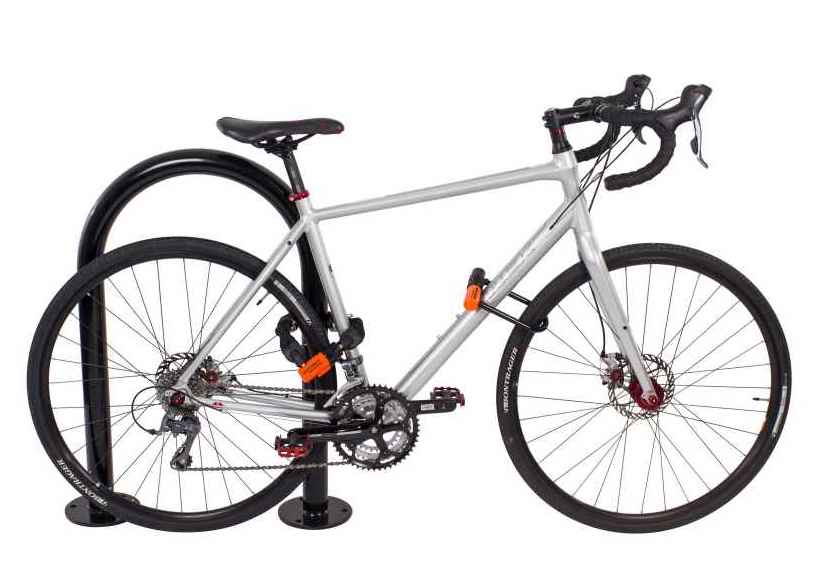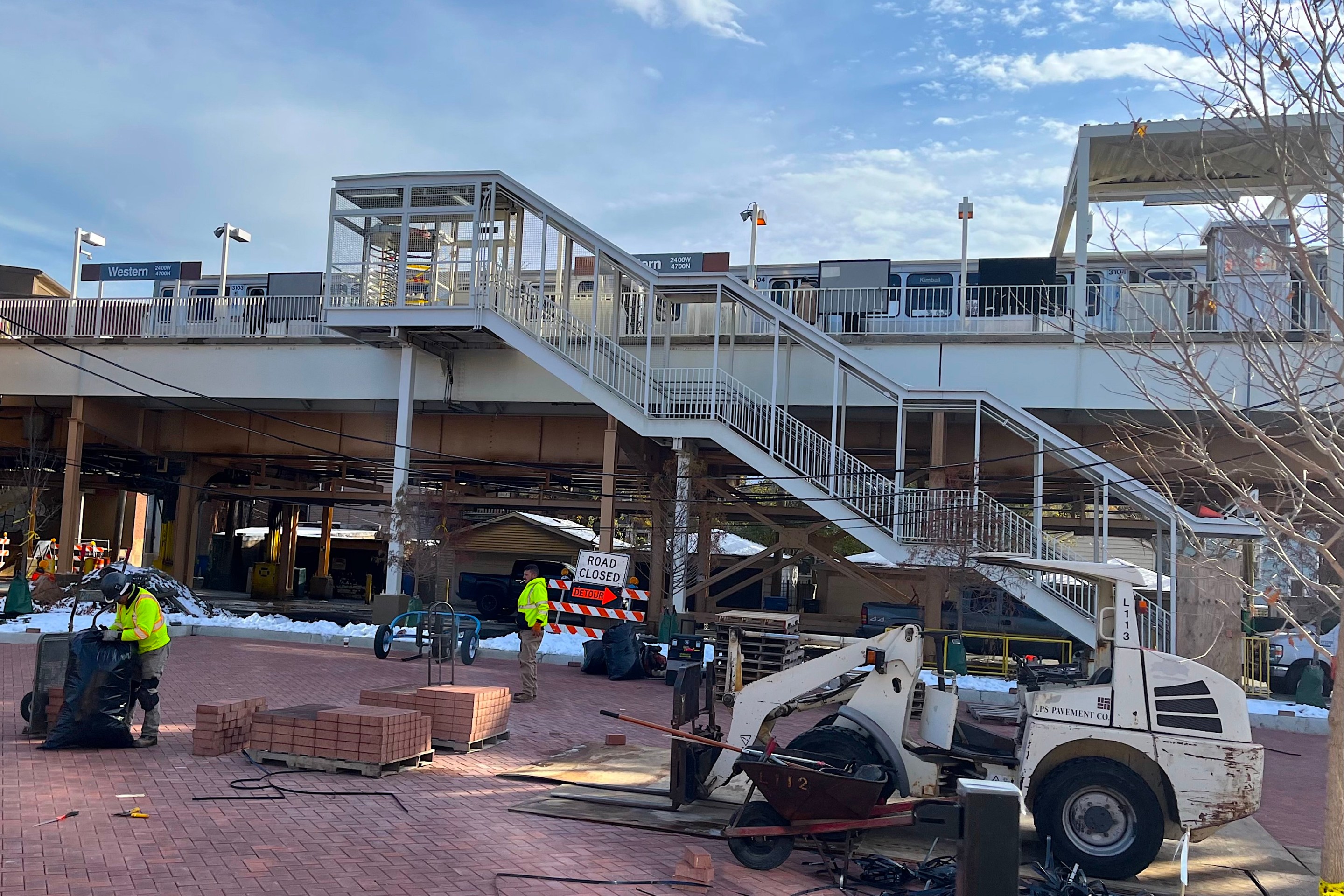Along with a rise in the number of Chicagoans using bikes for recreation and/or transportation during the pandemic, there has been an increase in bike thefts, with police reporting a roughly 6 percent spike this year, and the Chicago Stolen Bike Registry seeing a nearly 50 percent increase in reports.
Perhaps the the economic downturn has made more people resort to theft for income, at a time when there's a shortage of new bikes for sale and therefore a strong market for used cycles. Maybe some folks are too impatient to wait for the opportunity to buy a bike of their own. Others may be taking advantage of new opportunities for stealing cycles, since many newbie bike riders may be unfamiliar with the type of hardware and techniques that are needed to securely park a bike on the street in Chicago. I have noticed an increase in bikes locked with skimpy cable locks, which don't offer much protection.

Full disclosure: My own lax manner of storing my non-electric bike contributed to it being stolen in June. I was the only one using my building’s storage room on a regular basis and figured it was safe to leave it unlocked... until one day it wasn’t. It's likely someone had noticed my comings and goings with my bike and took advantage of an easy target. This experience highlights a very important rule: Never leave your bike unlocked in common spaces in your building, let alone on the street. Even if you're just running into a destination like a shop for a minute, always lock your bike.
I reached out to a few local bikes shop owners for words of wisdom on bike security that I could share with Streetsblog readers. Sharon Kaminecki, owner of Earth Rider Cycling in Bucktown-Wicker Park, recommended taking precautions in the event that your bike is stolen by writing down your bike’s serial number, taking photos of your bike, and registering it on various bike registries such as the Chicago Police’s Bike Registry and national bike registries. Sharon’s blog post titled “Preparing for the Unthinkable” has instructions on how you can find your bike’s serial number along with other helpful tips.
Ezra Hozinsky of Green Machine Cycles in Ravenswood had some advice on choosing an appropriate location to park your bike. “Garages are one of the worst places to store your bike,” he said. He’s heard from plenty of customers who had their bikes stolen from their garages. If you have no choice but to lock in a garage, at least lock it to a fixed object. There are also floor and wall anchors you can install to secure your bike.
Hozinsky also cautioned against locking your bike up in a place with tons of foot traffic like an 'L' station or outside a sports event (that is, during non-pandemic times when big special events are a thing.) “It’s very easy for someone to hang around the bike rack without attracting any attention because there are tons of bikes and people won’t assume anything underhanded is going on.”
[Bike racks installed in the "paid" area of CTA stations, past the turnstiles, are fairly secure places to lock since the general public doesn't have access to them, especially if they're within sight of the customer assistant's booth. Also note that secure valet bike parking is available, often for free, at special events like Cubs games. - Ed.]
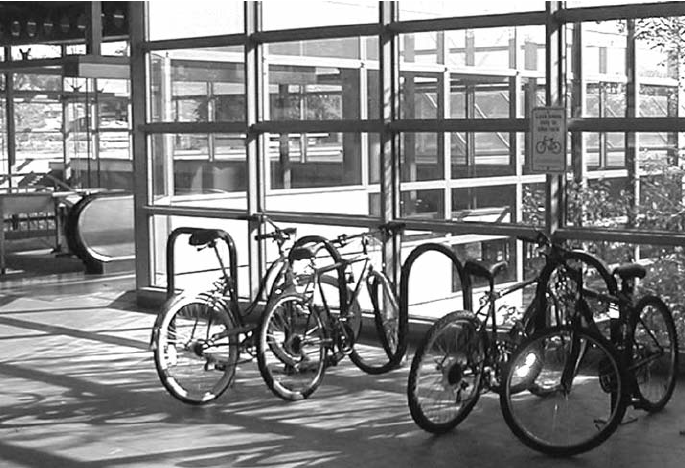
Hozinsky recommended choosing a location where people are walking a bit more slowly and leisurely as opposed to places where “people are a bit more in their head.” Sometimes you don’t have much choice but to lock your bike up in a location with heavy foot traffic. Hozinsky recommended using two locks as a baseline for bike security. “I encourage my customers to purchase a robust primary lock and a less expensive secondary lock. Generally when a potential bike thief sees two locks it signals more work on their end.”
For example, you might purchase a good-quality U-lock or heavy chain to secure your frame and one wheel to a fixed object like a bike rack or pole (if it's a sign post, tug on it to make sure it can't be easily pulled out of the ground!), and then use a cable to lock the other wheel to the frame and, ideally, the fixed object. Using two different locks may require two different tools to break them, another theft deterrent. Some people remove a wheel and lock both wheels and the frame to the lock to a fixed object, which is a reasonably secure solution as well.
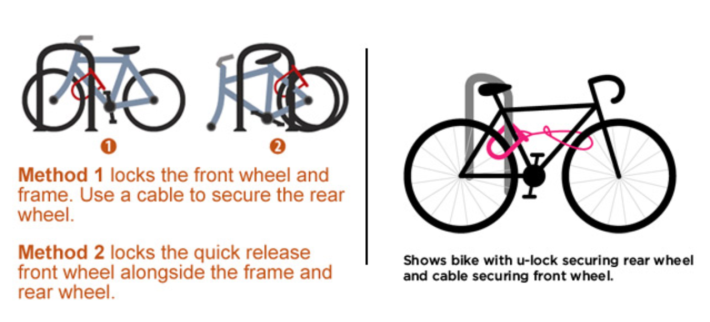
Another clever, somewhat non-intuitive, way of securing your rear-wheel and frame to a rack or pole is the Sheldon Brown Method, popularized by the late bike mechanic and cycling advice sage. If you U-lock lock the rear to a fixed through the rear triangle of the frame, as shown in the photo below, you've made it impossible for a thief to steal the frame without cutting through the wheel rim and tire, which is even more of a hassle than cutting a U-lock. See more security tips from Brown on his website.
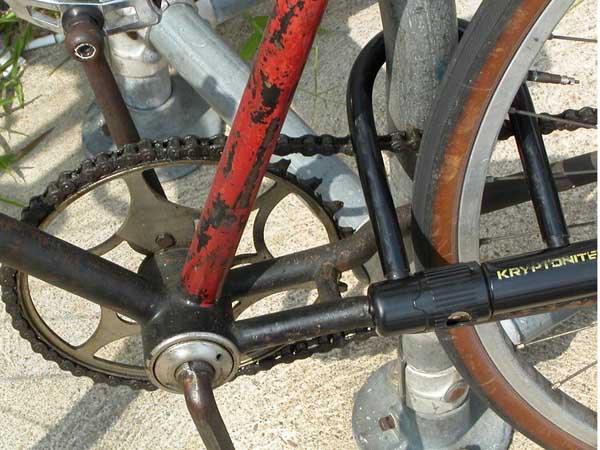
Chris Willard of Small Shop Cycles in Bronzeville added that wheel theft is also very common and it can be costly, so you definitely don't want to neglect to secure your wheels, especially if your bike has quick-release skewers. Another option for securing them is locks made specifically for your wheels such as locking skewers or "cafe locks," caliper locks attached to the frame.
Also keep in mind that any other part on your bike that isn't secured is a potential target for theft. So if your seat post has a quick-release lever, either take your seat with you when you park, secure it with a cable lock, or replace the lever with an Allen wrench bolt or, better yet, a locking skewer. And if your lights can be easily taken off your bike, take them with you or Superglue them to their brackets (that's obviously not an option for USB rechargeable lights.) And, of course, you should take any bags or panniers with you that could easily be grabbed off your bike.
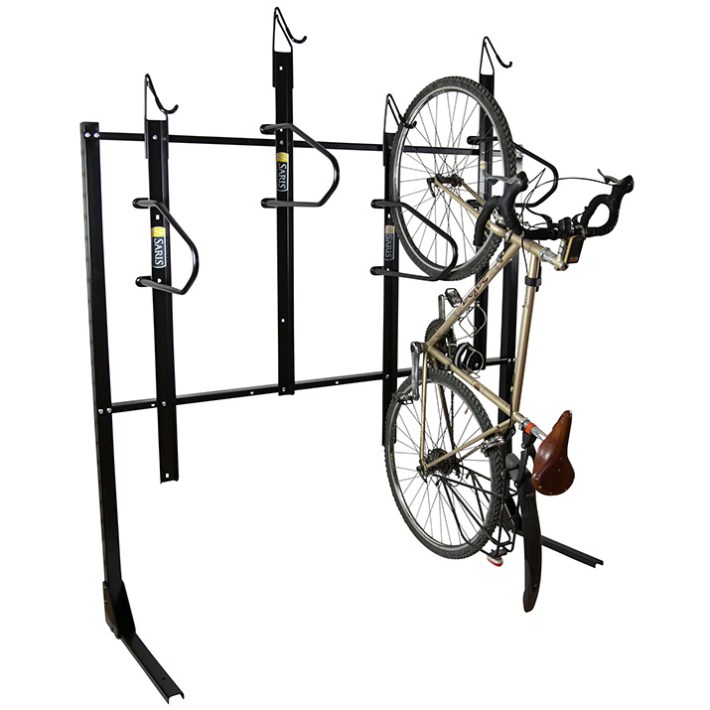
If you live in an apartment, it might be worth asking your landlord or building manager if they'd consider creating secure indoor parking by installing parking fixtures like a bike rack or lockable wall hooks for vertical parking to save floor space. (Note that vertical parking may not work for smaller people or other who may have trouble lifting their bikes, and it doesn't work for many cargo bikes.) Ditto for your workplace, and you could also ask the city to install rack on the public way in front of the building. (The department usually doesn't install racks at residential locations.) Find tips on setting up indoor bike parking areas here. I would love to see the next generation of bike parking from the Chicago Department of Transportation include weatherproof on-street bike hangars.
More bike security tips from CDOT are available here.
As the saying goes, an ounce of prevention is worth a pound of cure. While bike theft cannot be completely eradicated, these are some steps you can take to reduce the chances of your beloved ride being stolen. Divvy is another option if you don't even want to have to think about having your personal bike stolen.
Are there any tips you’d like to share when it comes to preventing or deterring bicycle theft?
